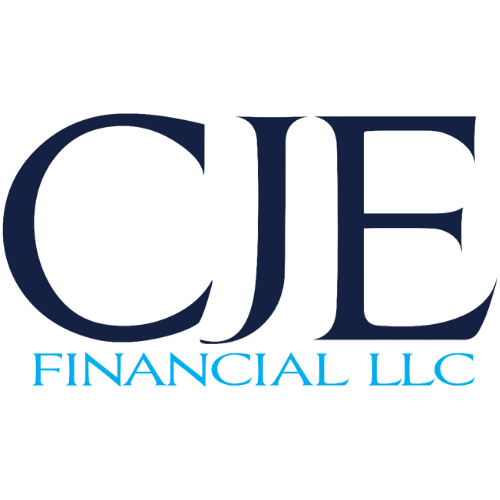Tax-Planning Strategies to Consider Before Year-End
As the year draws to a close, it's time to revisit your financial strategies, particularly when it comes to tax planning. Here are some key tax-planning strategies to consider before year-end to potentially help you maximize savings and minimize your tax liability.
Maximizing Contributions to Your Workplace Retirement Plan
If your employer offers a retirement plan with matching contributions, be sure to contribute enough to take full advantage of the match. If possible, consider contributing the maximum allowed to your 401(k) or similar workplace retirement plan- $23,000 in 2024 ($30,500 if you’re 50 or older). (1)
Contributing the maximum amount may help reduce your taxable income for the year while building your retirement savings. This strategy is particularly effective if you believe your tax rate will be lower in retirement than it is today. (1)
Alternatively, if you expect your tax rate to be higher in retirement, contributing to a Roth 401(k) may be a better strategy. If your employer offers the option and you haven’t already maxed out your traditional 401(k), you could make after-tax contributions to a Roth 401(k) up to the $23,000 limit ($30,500 for those 50 and older), minus whatever you contributed to your traditional 401(k). (1)
Maximizing All Other Tax-Deferred Savings Accounts
There are other tax-deferred savings accounts you may be able to contribute to before year-end:
Health Savings Accounts (HSAs): If you have an HSA, the current contribution limit for individuals is $4,150 ($5,150 if 55 or older), and for families, it's $8,300 ($9,300 if 55 or older). HSAs offer multiple benefits, including tax-free contributions and potential growth, and tax-free withdrawals for qualified medical expenses. (1)
Traditional IRAs: The current contribution limit for a Traditional IRA is $7,000, with an additional $1,000 "catch-up" contribution allowed for individuals age 50 and older. However, if you're covered by an employer-sponsored retirement plan, your contributions to a traditional IRA may not be fully tax-deductible and deductions may be phased out. (1)
SIMPLE IRA: Your employer may offer a Savings Incentive Match Plan for Employees (SIMPLE) individual retirement account (IRA). With a Simple IRA, employee contributions are pre-tax through payroll deductions, meaning that funds were withdrawn before income taxes had been applied. Contributions and earnings then have the potential to grow tax-free as long as they remain in the account, and withdrawals are taxed as ordinary income in retirement. The SIMPLE IRA contribution limit for 2024 is $16,000. Those 50 or older can save an additional $3,500 as a "catch-up contribution.” (2)
If you also contribute to another employer-sponsored retirement plan for another job, such as a 401(k) or 403(b), the total you can save as an employee across all of those plans, including SIMPLE IRAs, is $23,000, or $30,500 if you're age 50 or over. (2)
SIMPLE IRAs also offer a separate contribution limit for employers. This is particularly important to keep in mind if you've opened a SIMPLE IRA as a self-employed person or as an owner-employee of a small business, as you can contribute up to the maximum for each type of contribution. (2)
SEP IRA: Simplified employee pension (SEP) IRAs are designed for self-employed individuals and small business owners, allowing employers to directly contribute to their employees’ retirement accounts as well as their own. While employees don’t receive an annual tax deduction for contributing to the plan, they do benefit from the tax-deferred potential growth of their SEP IRA. (3)
In terms of eligibility, if you’re self-employed, a small business owner with at least one employee, a sole proprietor, part of a partnership, a corporation, or an S corporation, you may be able to open a SEP IRA. (3)
It’s important to note that SEP IRAs come with higher contribution limits than traditional or Roth IRAs. As of 2024, the maximum contribution is the lesser of 25% of the employee’s compensation or $69,000. (3)
Beyond benefiting the employees, SEP IRAs also offer potential tax benefits to employers. Employers can deduct the lesser of the contributions made or 25% of the employee’s compensation. SEP IRAs, however, do not permit employee matching. (3)
Closing Thoughts
Remember, tax planning is a year-round process, but by strategically maximizing contributions to your workplace retirement plans, IRAs, HSAs, and other tax-deferred accounts, you may be able to help reduce your taxable income for the year. It’s always recommended to consult with your tax professional before making any portfolio shifts intended to affect your tax return.
Article Sources:
(1) Adams, Hayden. “Tax-Saving Moves You Can Make Before Year-End.” Charles Schwab, October 10, 2024.
(2) Fidelity Smart Money. “SIMPLE IRA contribution limits for 2024 and 2025.” Fidelity, September 19, 2024.
(3) Villanova, Patrick and Arturo Conde. “Tax Benefits of a Simplified Employee Pension (SEP) IRA.” SmartAsset, February 16, 2024.

